Abstract
Dry matter accumulation of plants utilizing NH4+ as the sole nitrogen source generally is less than that of plants receiving NO3− unless acidity of the root-zone is controlled at a pH of about 6.0. To test the hypothesis that the reduction in growth is a consequence of nitrogen stress within the plant in response to effects of increased acidity during uptake of NH4+ by roots, nonnodulated soybean plants (Glycine max [L.] Merr. cv Ransom) were grown for 24 days in flowing nutrient culture containing 1.0 millimolar NH4+ as the nitrogen source. Acidities of the culture solutions were controlled at pH 6.1, 5.1, and 4.1 ± 0.1 by automatic additions of 0.01 n H2SO4 or Ca(OH)2. Plants were sampled at intervals of 3 to 4 days for determination of dry matter and nitrogen accumulation. Rates of NH4+ uptake per gram root dry weight were calculated from these data. Net CO2 exchange rates per unit leaf area were measured on attached leaves by infrared gas analysis. When acidity of the culture solution was increased from pH 6.1 to 5.1, dry matter and nitrogen accumulation were reduced by about 40% within 14 days. Net CO2 exchange rates per unit leaf area, however, were not affected, and the decreased growth was associated with a reduction in rates of appearance and expansion of new leaves. The uptake rates of NH4+ per gram root were about 25% lower throughout the 24 days at pH 5.1 than at 6.1. A further increase in solution acidity from pH 5.1 to 4.1 resulted in cessation of net dry matter production and appearance of new leaves within 10 days. Net CO2 exchange rates per unit leaf area declined rapidly until all viable leaves had abscised by 18 days. Uptake rates of NH4+, which were initially about 50% lower at pH 4.1 than at 6.1, continued to decline with time of exposure until net uptake ceased at 10 days. Since these responses also are characteristic of the sequence of responses that occur during onset and progression of a nitrogen stress, they corroborate our hypothesis.
Full text
PDF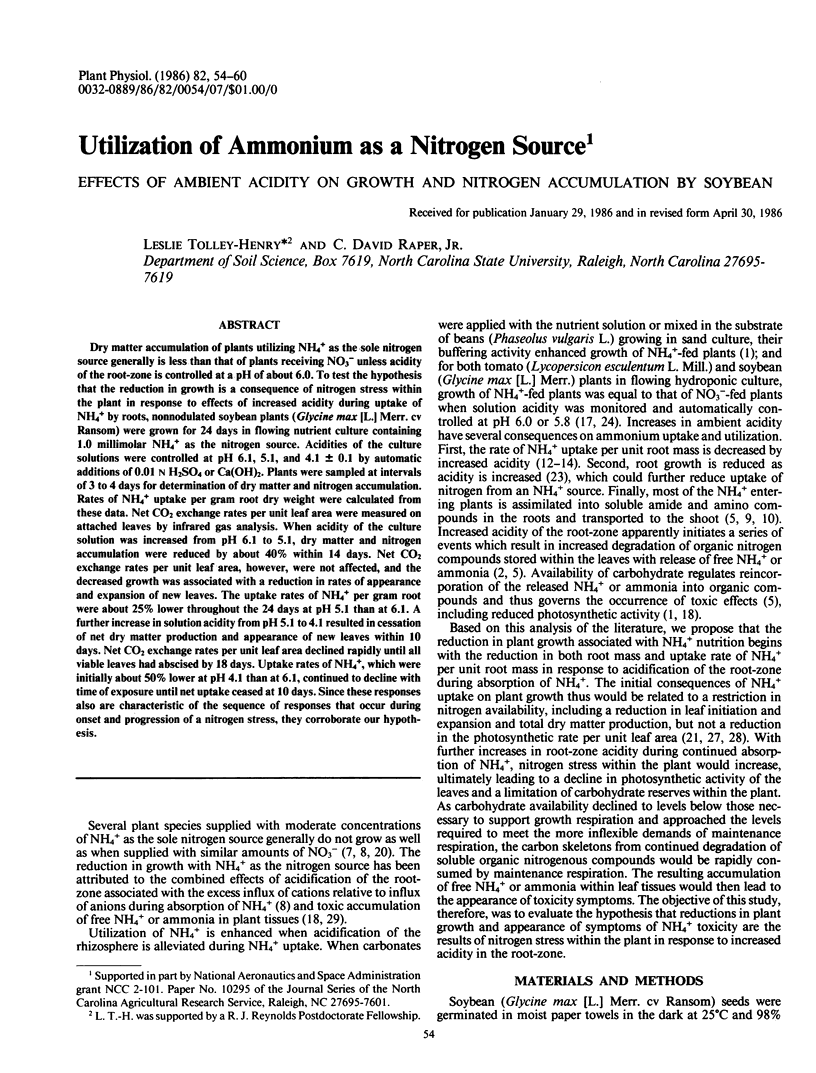
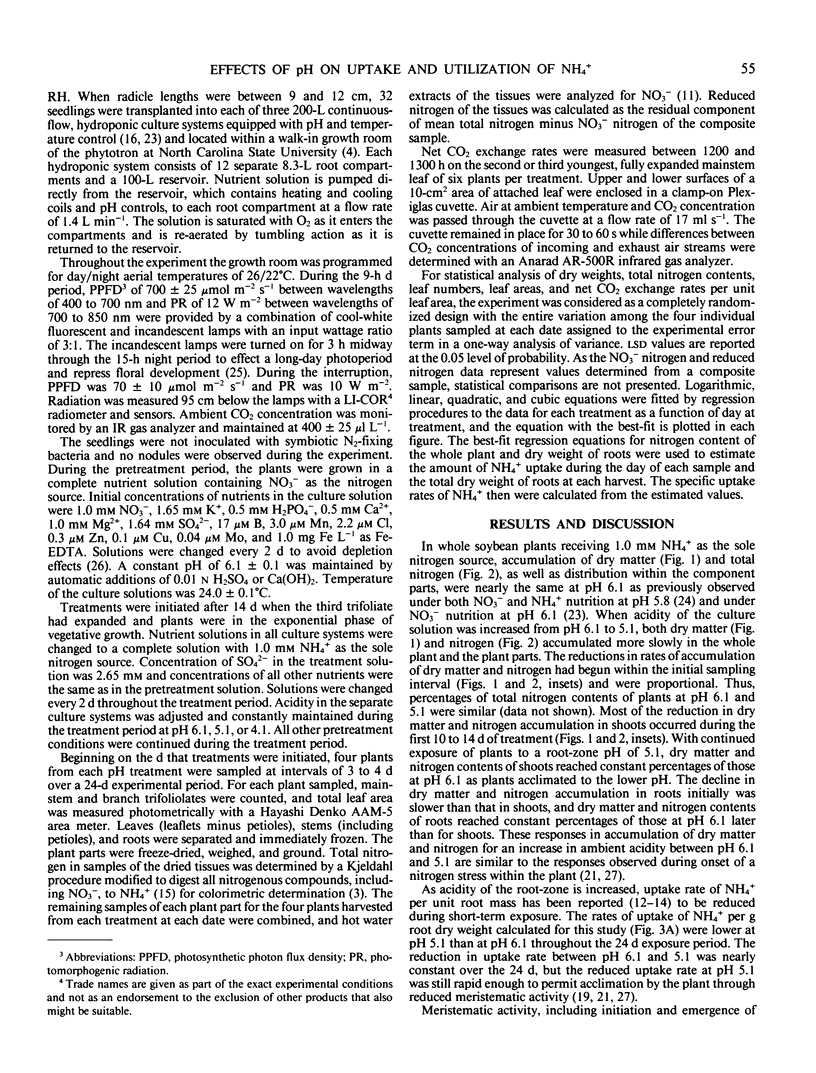
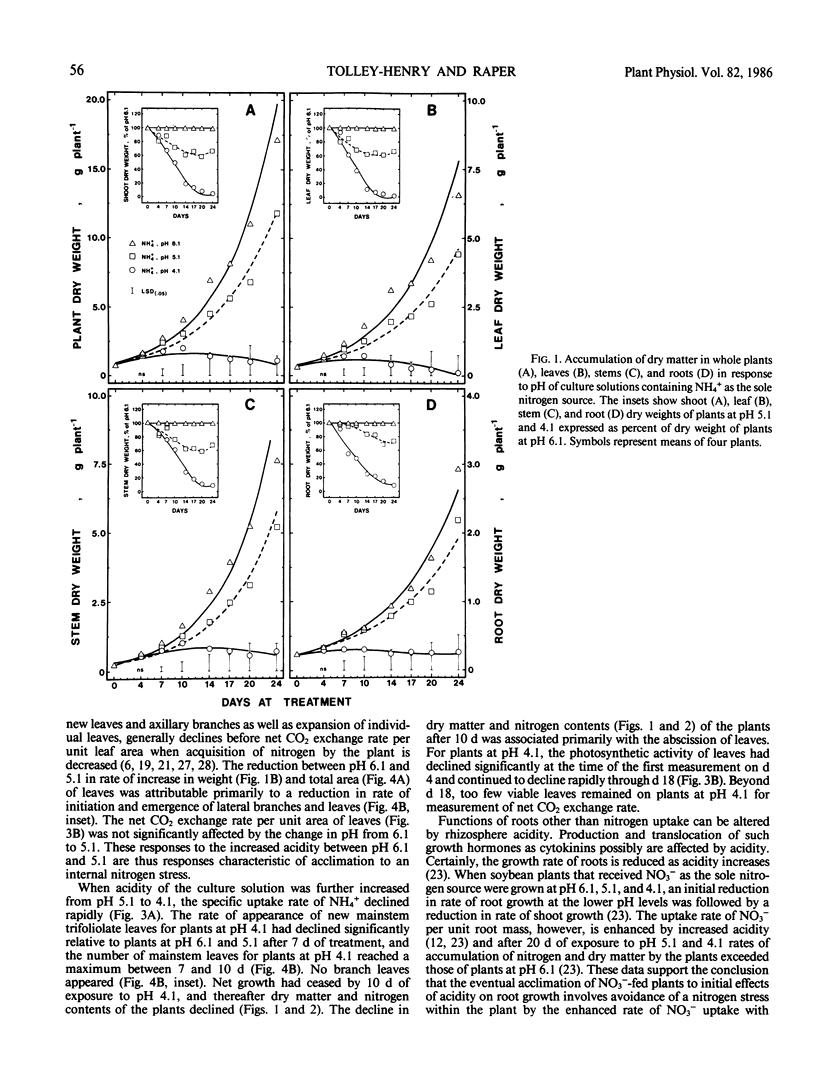
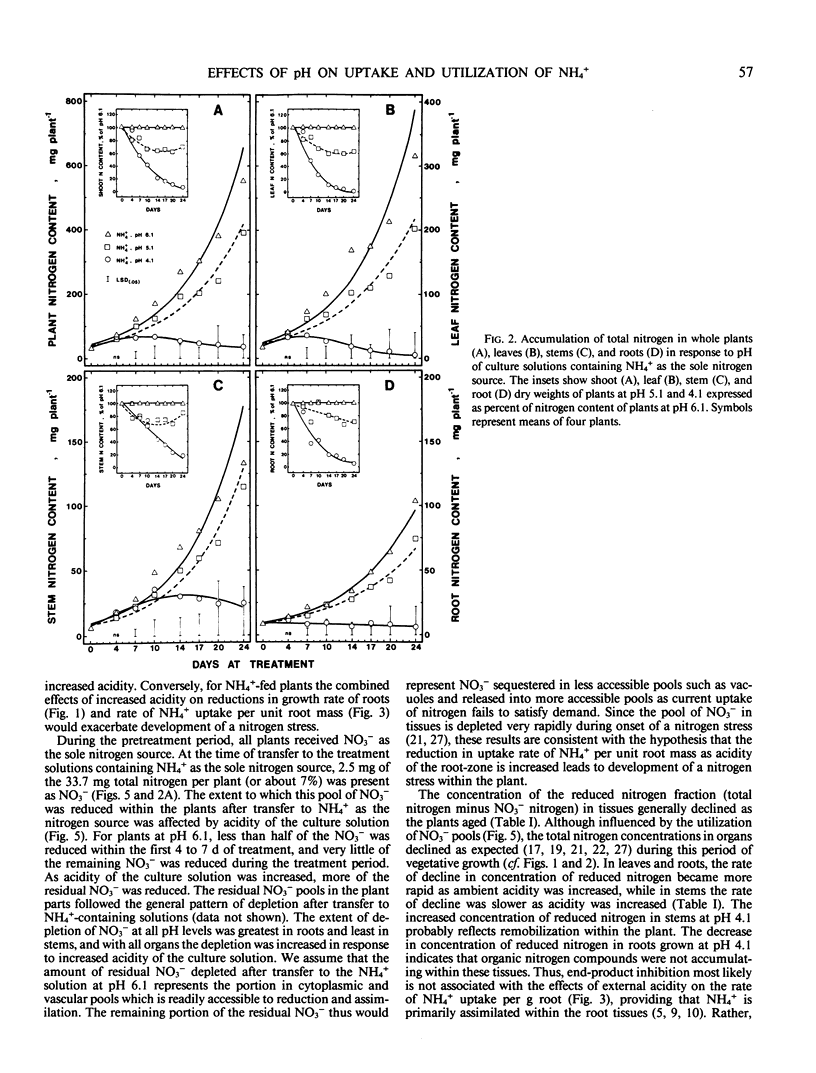
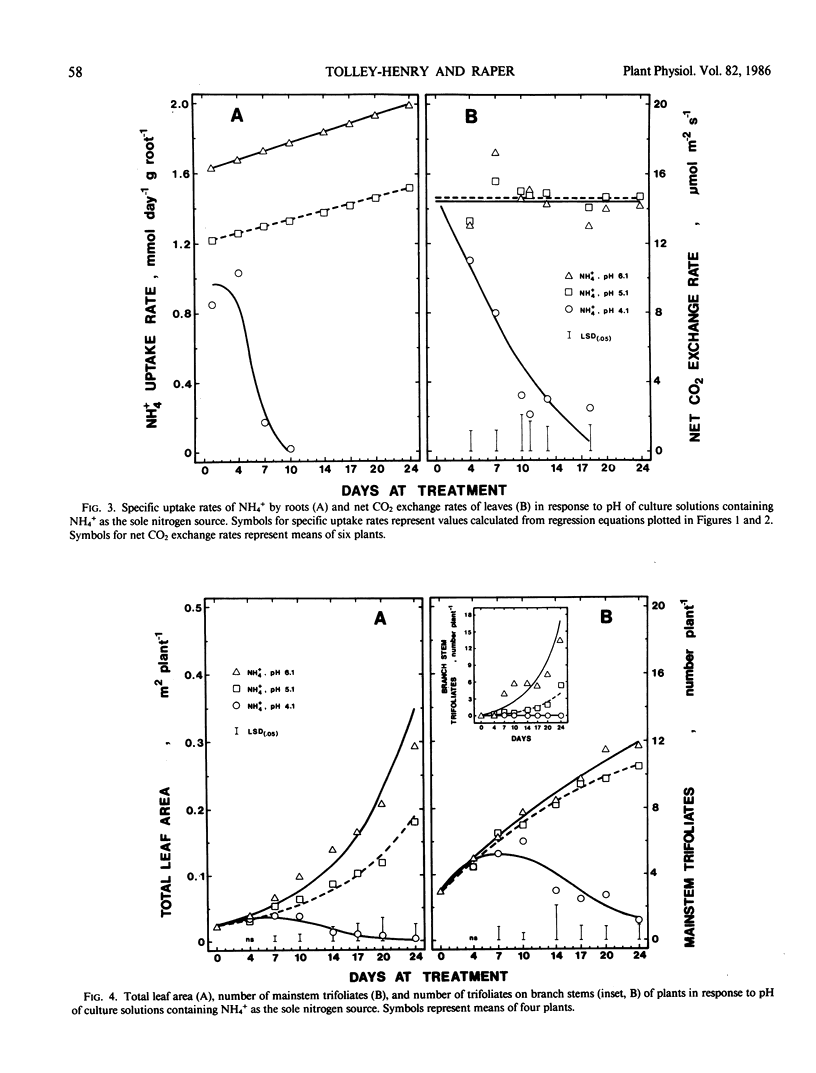
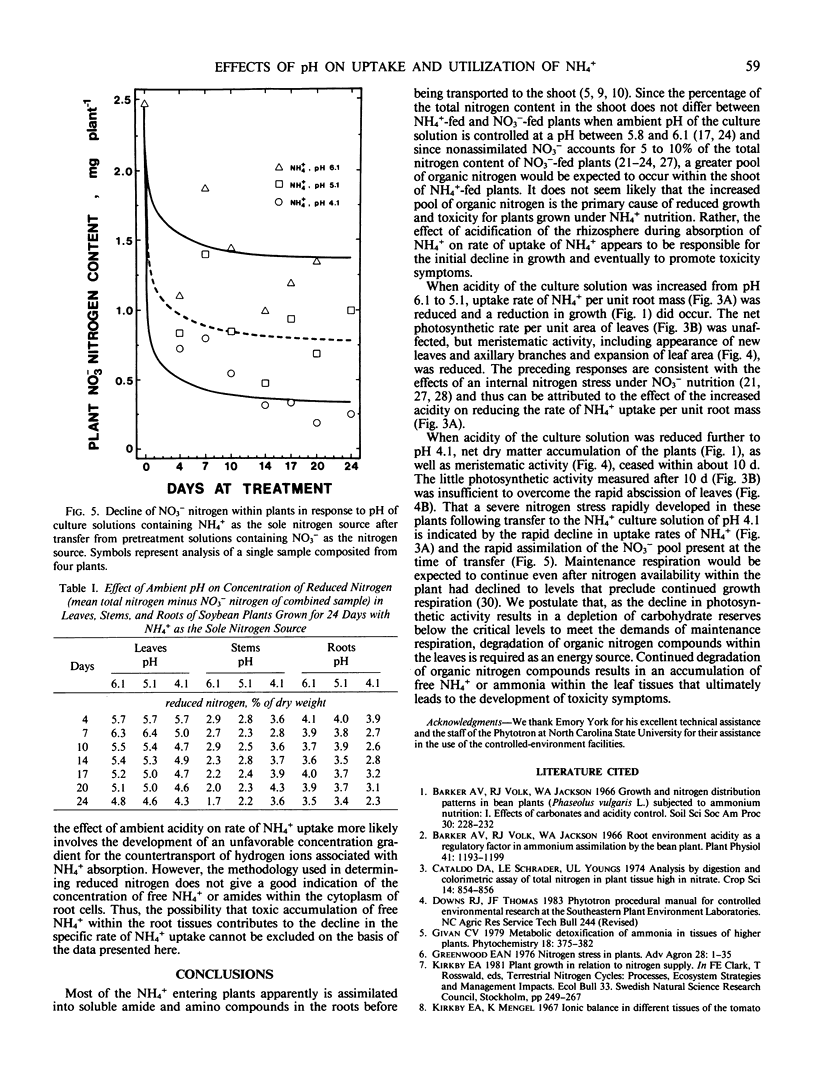
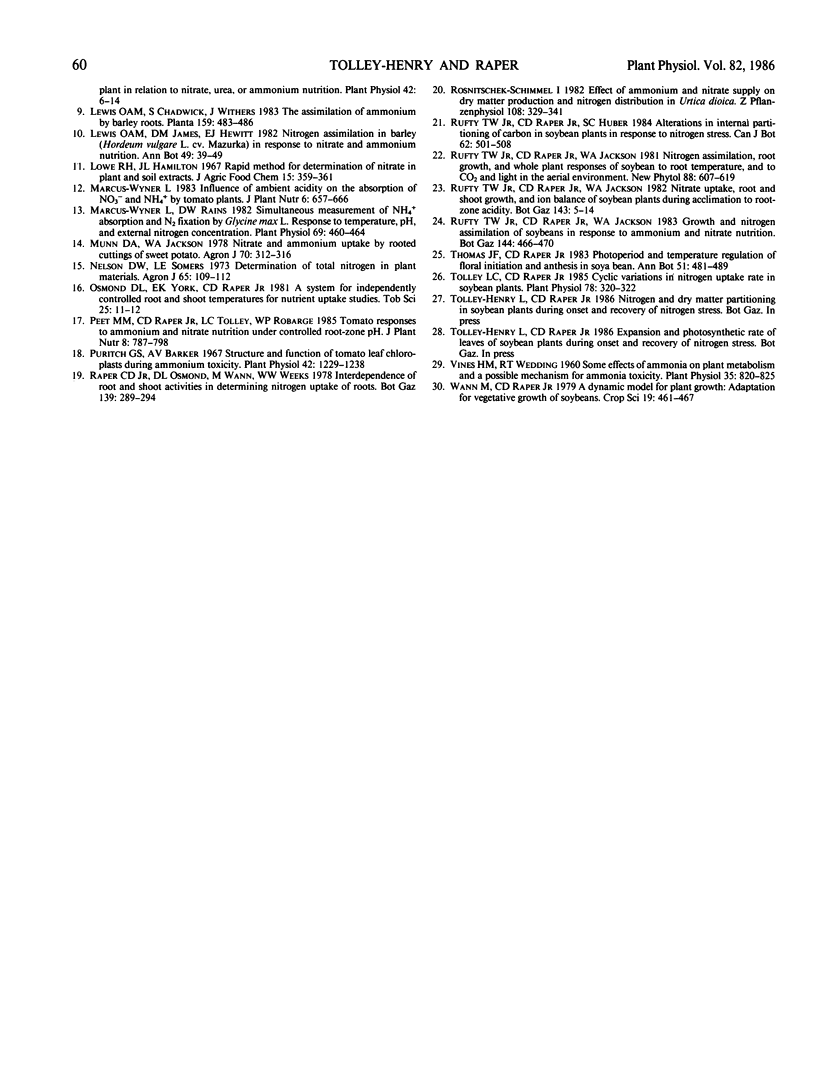
Selected References
These references are in PubMed. This may not be the complete list of references from this article.
- Barker A. V., Volk R. J., Jackson W. A. Root environment acidity as a regulatory factor in ammonium assimilation by the bean plant. Plant Physiol. 1966 Sep;41(7):1193–1199. doi: 10.1104/pp.41.7.1193. [DOI] [PMC free article] [PubMed] [Google Scholar]
- Kirkby E. A., Mengel K. Ionic balance in different tissues of the tomato plant in relation to nitrate, urea, or ammonium nutrition. Plant Physiol. 1967 Jan;42(1):6–14. doi: 10.1104/pp.42.1.6. [DOI] [PMC free article] [PubMed] [Google Scholar]
- Marcus-Wyner L., Rains D. W. Simultaneous Measurement of NH(4) Absorption and N(2) Fixation by Glycine max L. : RESPONSE TO TEMPERATURE, pH, AND EXTERNAL NITROGEN CONCENTRATION. Plant Physiol. 1982 Feb;69(2):460–464. doi: 10.1104/pp.69.2.460. [DOI] [PMC free article] [PubMed] [Google Scholar]
- Peet M. M., Raper C. D., Jr, Tolley L. C., Robarge W. P. Tomato responses to ammonium and nitrate nutrition under controlled root-zone pH. J Plant Nutr. 1985;8(9):787–798. doi: 10.1080/01904168509363384. [DOI] [PubMed] [Google Scholar]
- Puritch G. S., Barker A. V. Structure and function of tomato leaf chloroplasts during ammonium toxicity. Plant Physiol. 1967 Sep;42(9):1229–1238. doi: 10.1104/pp.42.9.1229. [DOI] [PMC free article] [PubMed] [Google Scholar]
- Rufty T. W., Jr, Raper C. D., Jr, Huber S. C. Alterations in internal partitioning of carbon in soybean plants in response to nitrogen stress. Can J Bot. 1984;62:501–508. doi: 10.1139/b84-074. [DOI] [PubMed] [Google Scholar]
- Tolley L. C., Raper C. D. Cyclic variations in nitrogen uptake rate in soybean plants. Plant Physiol. 1985 Jun;78(2):320–322. doi: 10.1104/pp.78.2.320. [DOI] [PMC free article] [PubMed] [Google Scholar]
- Vines H. M., Wedding R. T. Some Effects of Ammonia on Plant Metabolism and a Possible Mechanism for Ammonia Toxicity. Plant Physiol. 1960 Nov;35(6):820–825. doi: 10.1104/pp.35.6.820. [DOI] [PMC free article] [PubMed] [Google Scholar]


